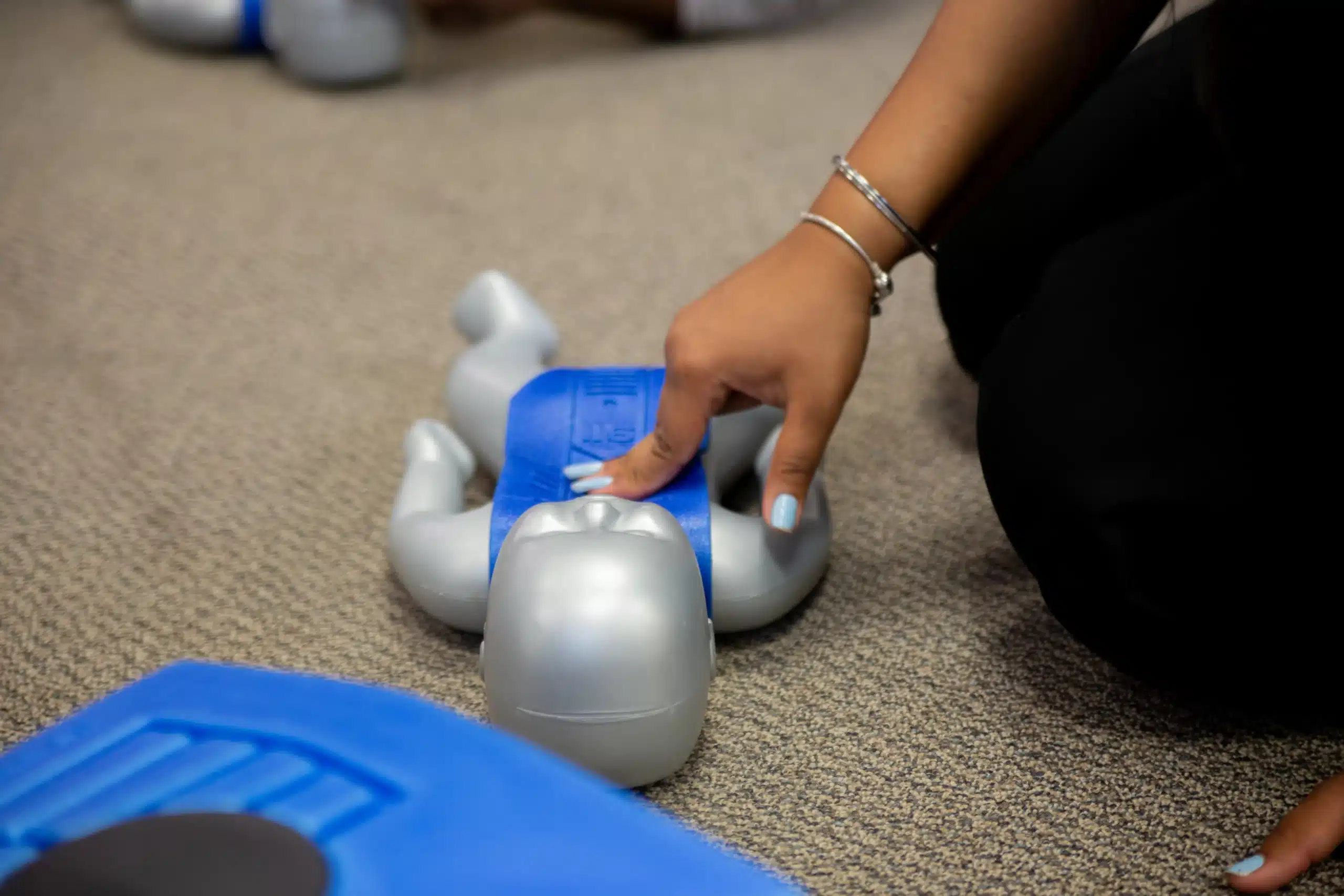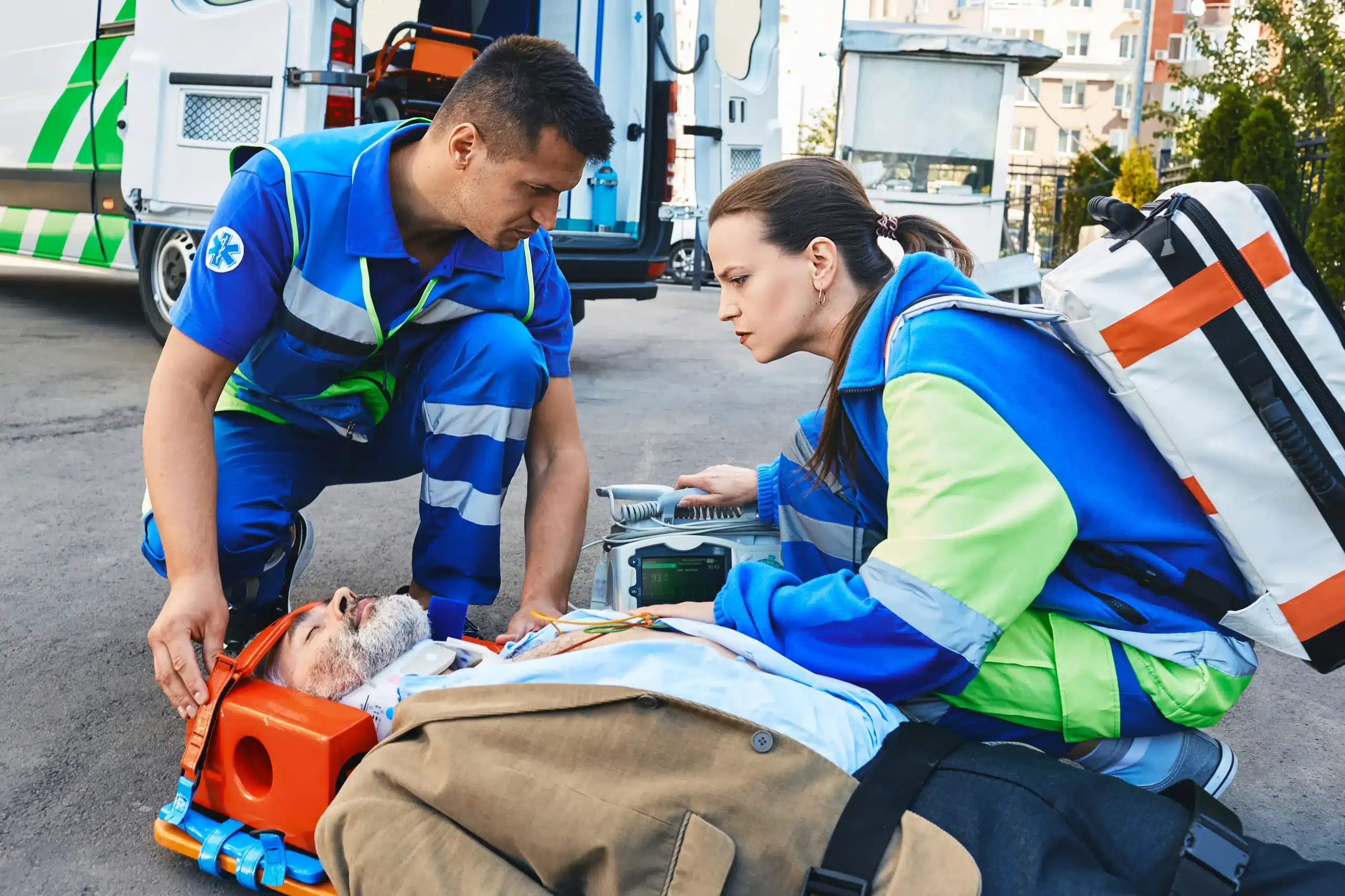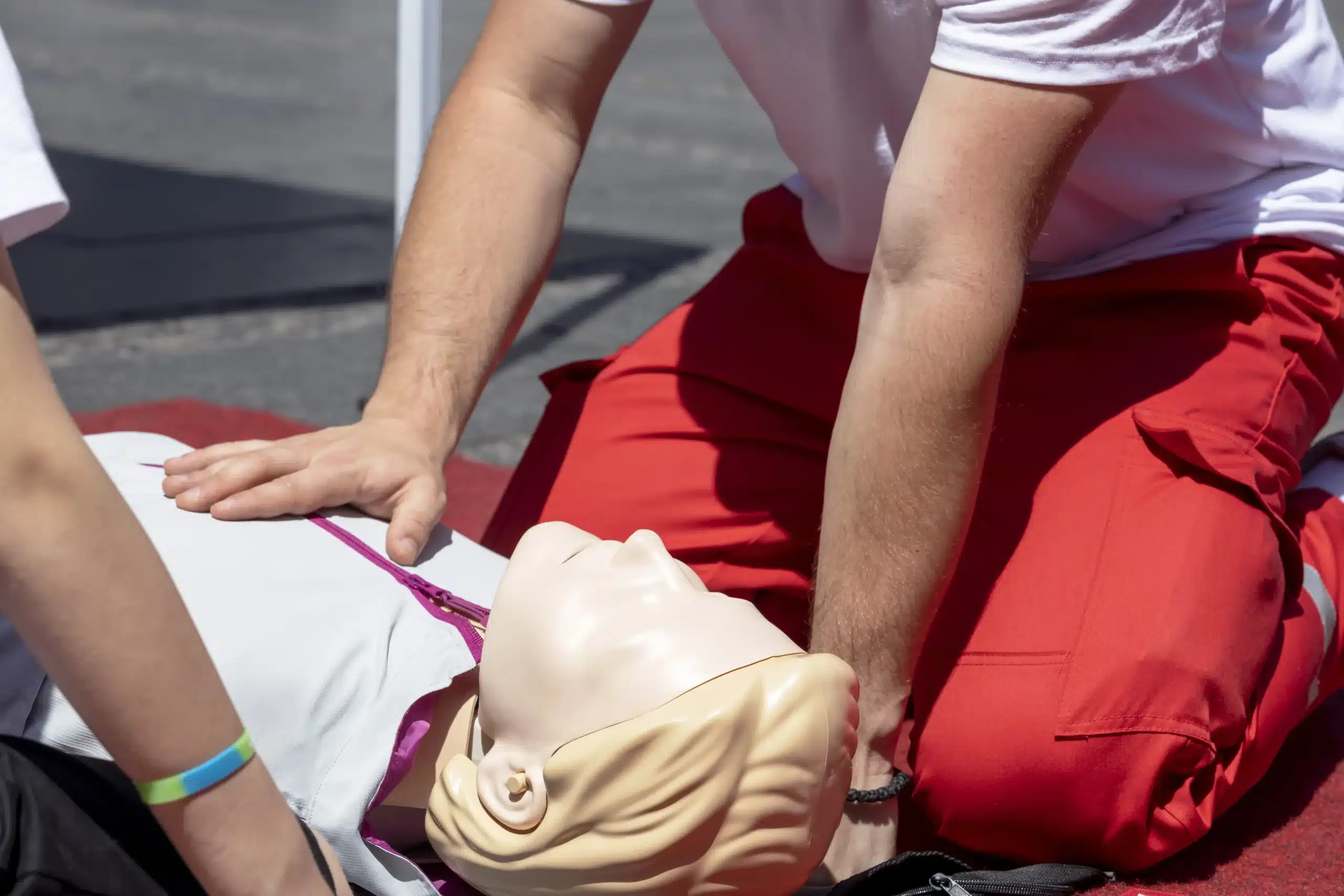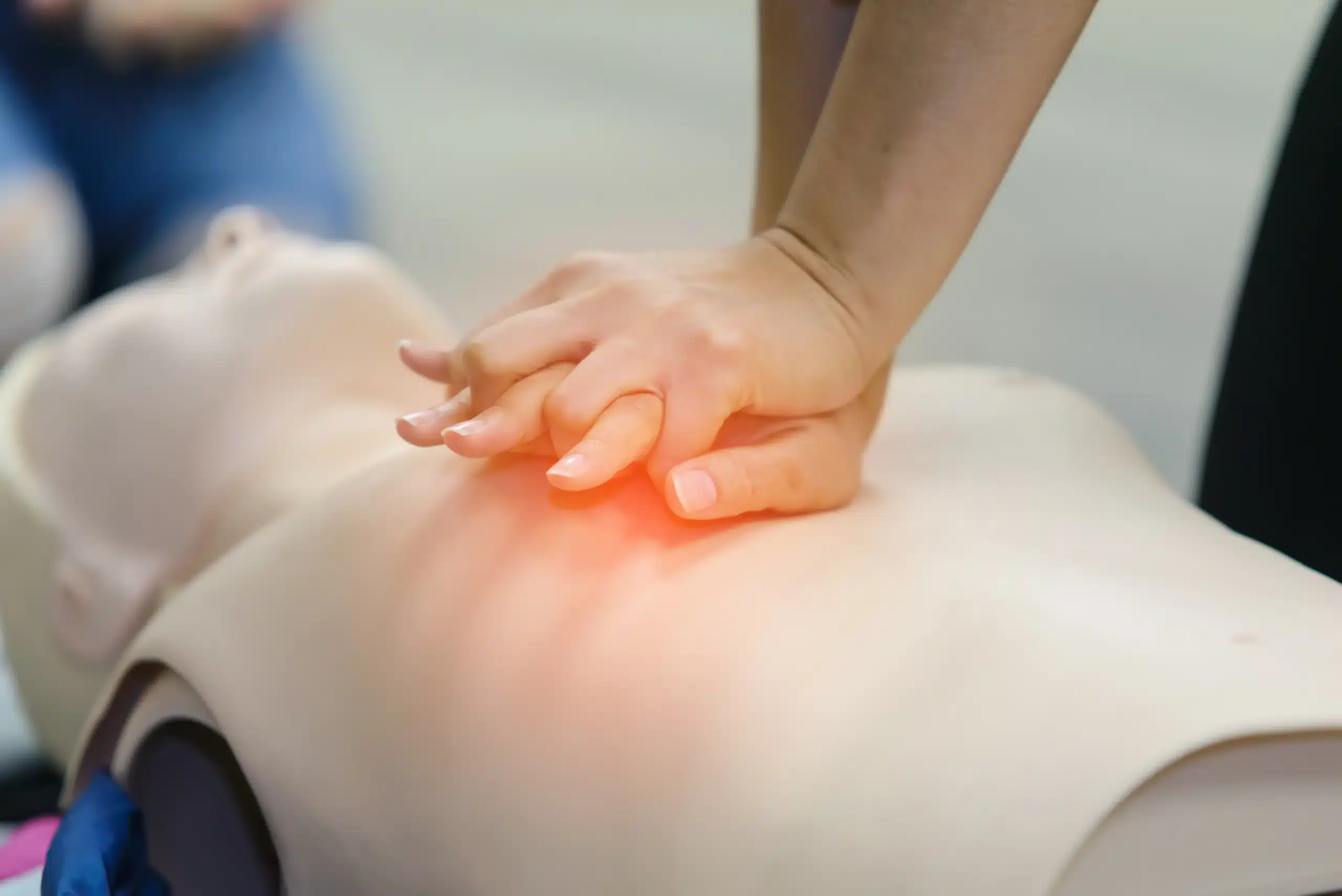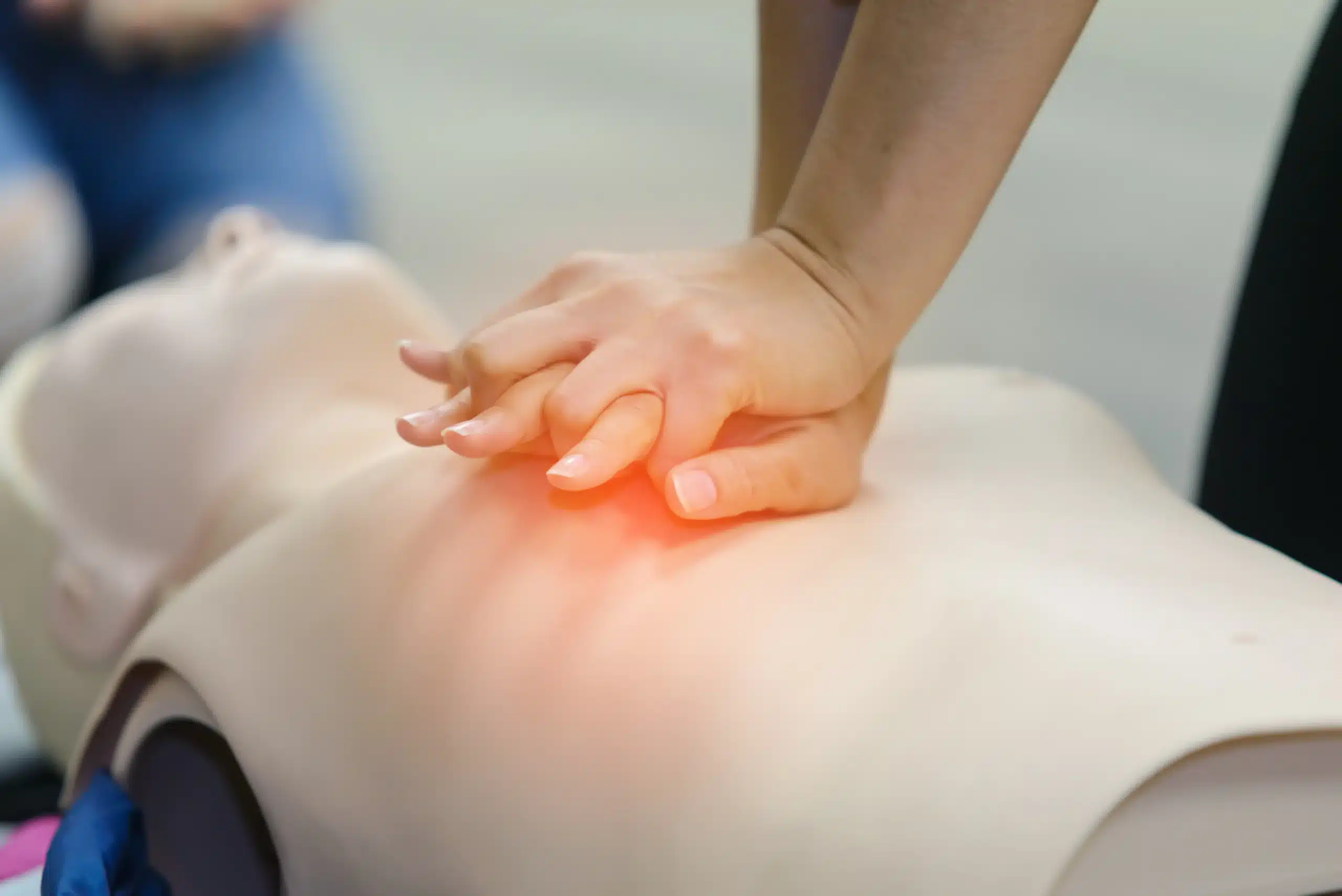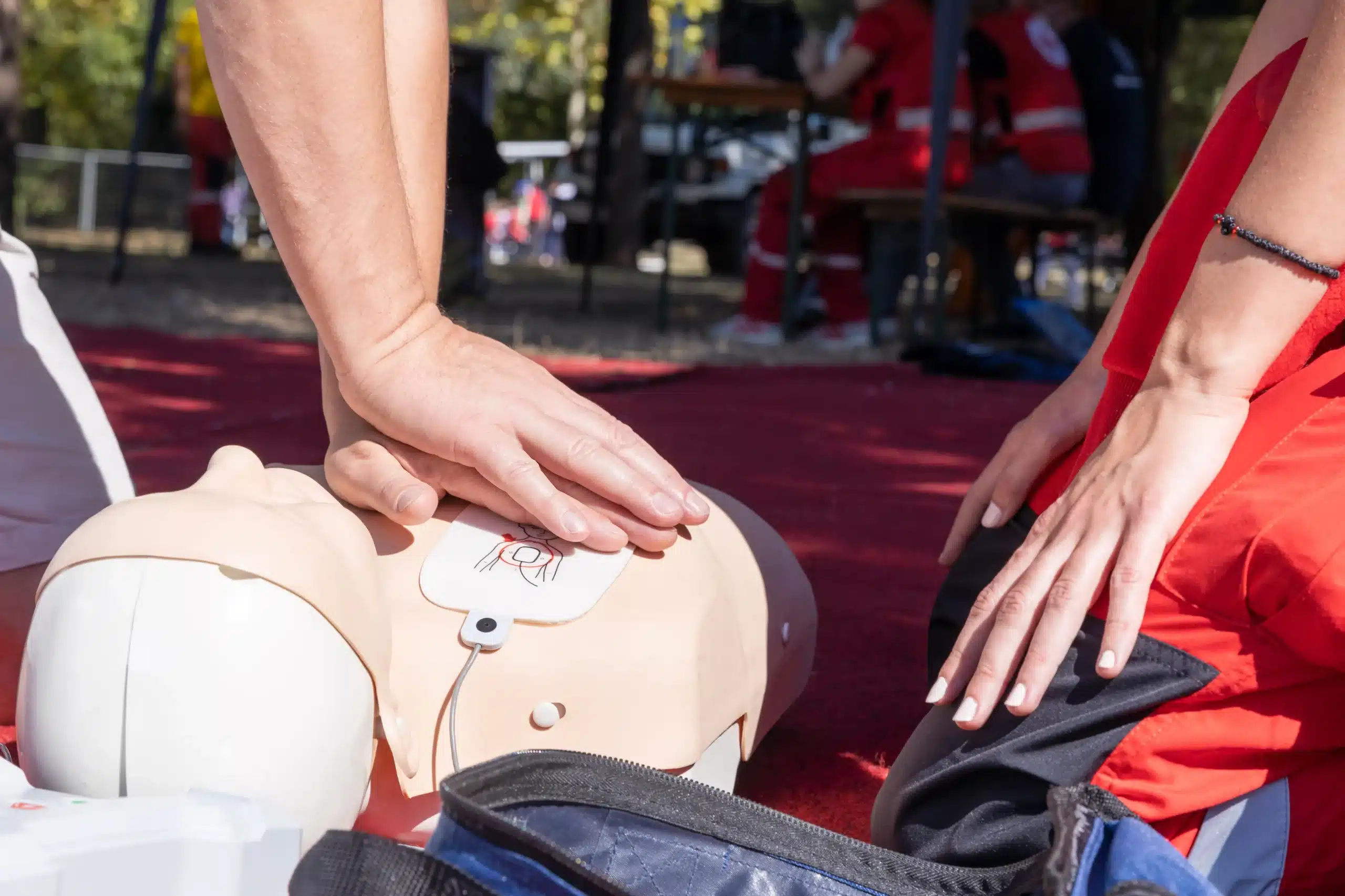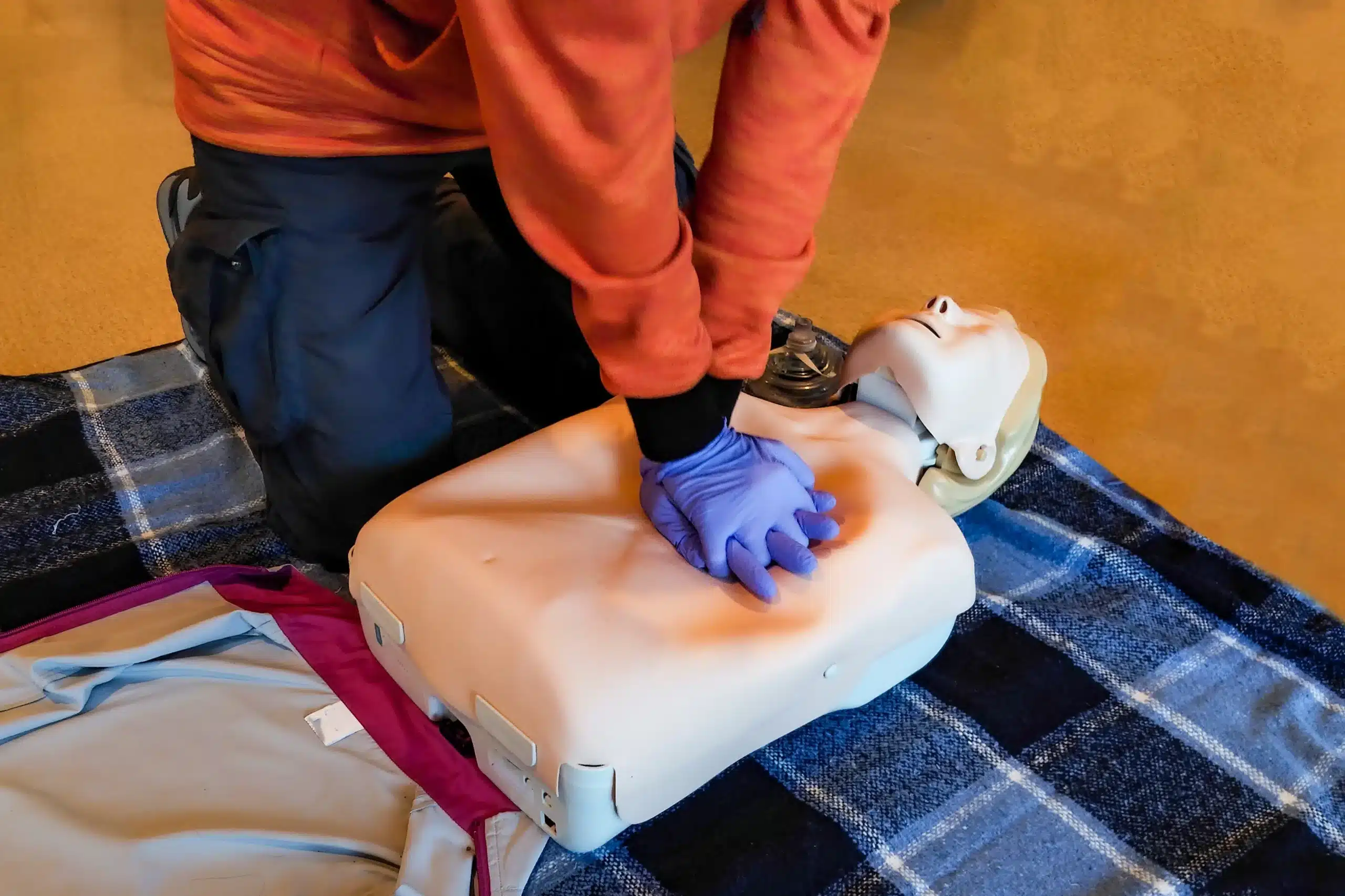Life is unpredictable, and emergencies can happen when we least expect them. Being equipped to handle these situations is empowering, and knowing CPR is one of the most valuable skills you can have. If you’re searching for CPR classes in Menlo Park, this guide is your roadmap. We’ll explore the different types of CPR training available, discuss the certification process, and help you find the perfect class to fit your schedule and learning style. From understanding the basics of CPR to navigating the registration process, we’ll provide you with the information you need to become a confident and prepared lifesaver.
Key Takeaways
- CPR training empowers you to save lives: Find a course in Menlo Park, from basic CPR for community members to advanced certifications like BLS and ACLS for healthcare providers.
- Compare CPR class options in Menlo Park: Consider factors like cost, certification type (AHA, Red Cross), class format (online, in-person), and your specific professional needs.
- Prepare for your CPR class and maintain your skills: Understand class requirements, practice regularly after your training, and stay current with your certification to confidently respond to emergencies.
What is CPR and Why is it Important?
Learning CPR is a valuable skill, and for some professions, it’s essential. This section covers the basics of CPR and why it matters.
What is CPR?
CPR (Cardiopulmonary Resuscitation) is a lifesaving technique used in emergencies when someone’s heartbeat or breathing has stopped. It involves chest compressions and rescue breaths to circulate oxygenated blood to the brain and other vital organs until professional medical help arrives. Think of it as a bridge keeping someone alive until paramedics arrive. For a complete guide to CPR training in Menlo Park, check out this resource.
Why is CPR Crucial?
Cardiac arrest can happen anytime, anywhere. Over 500,000 cardiac arrests occur yearly in the US, and CPR can be the difference between life and death. Learning CPR equips you to respond effectively in these critical situations. Even if your certification has expired, the American Red Cross still recommends performing CPR if needed—it’s always better than inaction. It’s a powerful skill that can empower you to save a life.
Find CPR Classes in Menlo Park
If you’re looking for CPR classes in Menlo Park, you have several great options. Whether you’re a healthcare professional needing recertification or just want to learn this vital skill, there’s a course out there for you.
Palo Alto CPR Classes (Safety Training Seminars)
Safety Training Seminars offers a range of CPR and first-aid certifications, including American Heart Association (AHA) courses like BLS, ACLS, and PALS. With locations throughout Northern California, they make it easy for Menlo Park residents to find convenient, high-quality training. Their courses cover essential lifesaving techniques and provide certifications needed for many professions. They also offer a low price guarantee and discounts for groups.
Menlo Fire CERT
The Menlo Fire Community Emergency Response Team (CERT) has a comprehensive CPR and first-aid training program. It’s designed to give people the skills they need to handle medical emergencies until professional help arrives. This is a particularly good choice if you’re interested in community preparedness.
American Red Cross
The American Red Cross offers a variety of CPR/AED training and certification courses throughout California, including Menlo Park. You can choose from in-person, online, or blended learning formats to fit your schedule. Their certification is good for two years and meets OSHA workplace safety requirements.
Stanford Health Care
Stanford Health Care provides CPR and first-aid training for both healthcare professionals and the community. Their courses equip participants with the skills to respond effectively in emergencies. They offer BLS for healthcare providers and Heartsaver CPR for anyone else looking to learn CPR.
What Happens in a CPR Class?
So, you’ve decided to take a CPR class—fantastic! Knowing what to expect can help you feel prepared and ready to learn. This section covers the typical class format, the certification process, and what you’ll learn.
Class Duration and Formats
CPR classes in Menlo Park offer various formats to fit different schedules and learning styles. You’ll find shorter, targeted courses and more comprehensive programs covering CPR and first aid. For example, the Menlo Fire CERT offers a combined CPR and First Aid training program that lasts seven hours. This longer format allows for thorough instruction and ample practice time. If you need more flexibility, providers like Safety Training Seminars offer various CPR, BLS, ACLS, PALS, and NRP certification classes at different locations, or even on-site at your workplace. This is a great option for busy professionals or groups.
Certification Process and Validity
After successfully completing your CPR class, you’ll receive a certification card. This card verifies you’ve learned the skills to potentially save a life. Most certifications are valid for two years, including those from the American Red Cross. This timeframe aligns with industry standards and keeps your skills current. Maintaining your certification is crucial, especially if your job requires it or to meet workplace safety guidelines, like those from OSHA. The American Red Cross offers many CPR/AED training and certification classes throughout California, making renewal convenient.
Course Content Overview
CPR classes cover a range of topics, from recognizing cardiac arrest to performing chest compressions and rescue breaths. You’ll learn how to use an AED and how to help someone who is choking. Many courses, such as those offered by Safety Training Seminars, adhere to American Heart Association (AHA) guidelines, including BLS, ACLS, and PALS. These courses cover more advanced life-saving techniques. Beyond the technical skills, CPR classes also emphasize quick thinking and clear communication during emergencies. Programs like Menlo Fire CERT’s focus on preparing people to respond effectively until professional help arrives. This community-focused approach empowers people to handle emergency situations.
How Much Do CPR Classes Cost?
CPR class costs in Menlo Park depend on several factors, including the level of certification, the course format (in-person or blended learning), and whether you’re taking a class individually or as part of a group. Knowing what influences pricing can help you find a class that fits your budget and learning needs.
Compare CPR Class Prices
It’s smart to compare prices from different providers. For example, a BLS CPR Provider course, which often includes online learning combined with in-person skills testing, typically costs around $120. This comprehensive course provides the essential skills needed to respond to life-threatening emergencies. Remember to factor in any additional costs, such as study materials or recertification fees, when comparing prices. Our low price guarantee ensures you’re getting the best value for your training.
Group Discounts and Special Offers
If you’re training with a group, such as coworkers or a community organization, look for providers that offer group discounts. These discounts can significantly reduce the cost per person. Contact us to learn more about our group discounts and how we can tailor a training program to meet your organization’s specific requirements. We also offer the innovative RQI program, a convenient and cost-effective recertification option for healthcare professionals.
Free Training Options
While many CPR certification courses come with a fee, free options are sometimes available. Check with your local community centers, fire departments, or organizations like the Menlo Park Fire District to see if they offer free CPR and first aid training. These community-based classes are a valuable resource for learning essential life-saving skills. You can often find information on these free courses on the Menlo Park Fire District website. Keep in mind that free courses may not always offer the same level of certification or in-depth training as paid courses.
Choose the Right CPR Class
Knowing which CPR class is right for you can feel overwhelming with so many options. This section breaks down the key differences between CPR certifications and training formats, so you can confidently choose the best fit.
Basic CPR vs. BLS vs. ACLS
When choosing a CPR class, it’s important to understand the distinctions between Basic CPR, Basic Life Support (BLS), and Advanced Cardiovascular Life Support (ACLS). Basic CPR teaches the essentials of CPR and how to use an AED; it’s perfect for the general public and anyone wanting to learn this life-saving skill. BLS certification provides more in-depth training for healthcare providers, covering advanced techniques and a deeper understanding of cardiac emergencies. For healthcare providers looking for BLS certification, Palo Alto CPR classes offer convenient options. ACLS goes further still, equipping healthcare professionals with the skills to manage cardiac arrest and other cardiovascular emergencies in clinical settings. ACLS training is crucial for advanced medical professionals.
Considerations for Different Professions
Your profession often dictates the type of CPR training you need. Healthcare providers, teachers, and childcare workers, for example, frequently require BLS certification. First responders and medical personnel may need ACLS training. Choosing a class that aligns with your professional requirements is key. Safety Training Seminars offers various CPR training courses tailored to different professions, ensuring everyone from healthcare professionals to community members can find the right fit. For workplaces looking to certify their teams, they also offer group discounts.
Online vs. In-Person Training
CPR classes are increasingly offering both online and in-person training. Online courses offer flexibility, allowing you to learn at your own pace. However, in-person training provides crucial hands-on practice, essential for mastering CPR techniques. Safety Training Seminars offers various CPR and first aid classes in Menlo Park, making it easy to find a format that suits your learning style and schedule. Consider what works best for you—the convenience of online learning or the hands-on experience of in-person training. For those interested in the RQI program, information on RQI classes is available. If cost is a concern, be sure to check out Safety Training Seminars’ low price guarantee.
Register for CPR Classes in Menlo Park
Steps to Register
Ready to sign up for a CPR class in Menlo Park? It’s easier than you think. Start by exploring local providers like Menlo Fire CERT, which offers CPR and First Aid classes the first Saturday of each month at the Arrillaga Family Recreation Center. Check their website for upcoming dates and registration information. For more options, including BLS, ACLS, PALS, and NRP certifications, browse the courses available through Safety Training Seminars, which offers classes throughout Northern California. Having a range of choices makes it simple to find a class that suits your schedule and needs.
What to Bring to Class
You won’t need much for your CPR class, but it’s always wise to check the training provider’s website for specific requirements. For example, Menlo Fire CERT suggests reviewing your registration details and confirming the class date to ensure you’re fully prepared.
Tips for CPR Training Success
Want to maximize your learning? First, choose a course that meets your goals. Look for classes offering certification from reputable organizations like the American Heart Association (AHA) or the Red Cross. Consider whether an in-person or blended learning format works best, and select a class time that fits your schedule. Second, practice and review after your class. Providers like Safety Training Seminars, which offers the RQI program, often provide resources to reinforce your skills. Regular review builds confidence and helps you retain those lifesaving techniques. For additional information and tips, check out our blog post on CPR Certification in Menlo Park.
Related Articles
- Why CPR is Important in Healthcare – Palo Alto CPR Classes
- CPR Certification in Menlo Park: Your Guide – Palo Alto CPR Classes
- CPR Training in Menlo Park: Your Complete Guide – Palo Alto CPR Classes
- Why CPR is Crucial in Healthcare
- CPR Renewal in Menlo Park: Your Guide – Palo Alto CPR Classes
Frequently Asked Questions
How do I choose between Basic CPR, BLS, and ACLS certification? Basic CPR training is great for anyone wanting to learn the fundamentals, while BLS certification is generally required for healthcare providers and those in related fields. ACLS certification is a more advanced level of training for medical professionals who manage cardiovascular emergencies. Think about your current role and future career goals when making your decision.
What if I need CPR certification for my job? Many employers require CPR certification, especially in healthcare, education, and childcare. Check with your employer to see what type of certification they require (Basic CPR, BLS, or ACLS) and if they have preferred training providers. If you’re an employer looking to train your team, consider group discounts offered by providers like Safety Training Seminars.
Are online CPR courses as effective as in-person classes? Online CPR courses offer flexibility, but in-person classes provide hands-on practice with CPR mannequins and feedback from certified instructors. This practical experience can be invaluable when applying your skills in a real-life emergency. Consider a blended learning approach, combining online learning with in-person skills sessions, for the best of both worlds.
How often do I need to renew my CPR certification? CPR certifications are typically valid for two years. Check with your certifying organization (like the American Heart Association or the Red Cross) for their specific renewal requirements. Staying current with your certification ensures your skills are up-to-date and you’re prepared to respond effectively in an emergency.
What if I can’t afford a CPR class? While most CPR classes have a fee, some community organizations and fire departments offer free or low-cost training. Check with your local resources to see what’s available in your area. Remember, even basic CPR knowledge can make a difference in a life-or-death situation.
